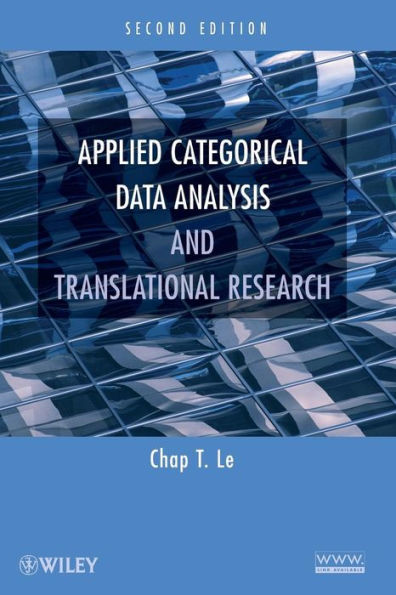Thoroughly updated with the latest advances in the field, Applied Categorical Data Analysis and Translational Research, Second Edition maintains the accessible style of its predecessor while also exploring the importance of translational research as it relates to basic scientific findings within clinical practice. With its easy-to-follow style, updated coverage of major methodologies, and broadened scope of coverage, this new edition provides an accessible guide to statistical methods involving categorical data and the steps to their application in problem solving in the biomedical sciences.
Delving even further into the applied direction, this update offers many real-world examples from biomedicine, epidemiology, and public health along with detailed case studies taken straight from modern research in these fields. Additional features of the Second Edition include:
- A new chapter on the relationship between translational research and categorical data, focusing on design study, bioassay, and Phase I and Phase II clinical trials
- A new chapter on categorical data and diagnostic medicine, with coverage of the diagnostic process, prevalence surveys, the ROC function and ROC curve, and important statistical considerations
- A revised chapter on logistic regression models featuring an updated treatment of simple and multiple regression analysis
- An added section on quantal bioassays
Each chapter features updated and new exercise sets along with numerous graphs that demonstrate the highly visual nature of the topic. A related Web site features the book's examples as well as additional data sets that can be worked with using SAS® software.
The only book of its kind to provide balanced coverage of methods for both categorical data and translational research, Applied Categorical Data Analysis and Translational Research, Second Edition is an excellent book for courses on applied statistics and biostatistics at the upper-undergraduate and graduate levels. It is also a valuable reference for researchers and practitioners in the biomedical and public health fields.
Thoroughly updated with the latest advances in the field, Applied Categorical Data Analysis and Translational Research, Second Edition maintains the accessible style of its predecessor while also exploring the importance of translational research as it relates to basic scientific findings within clinical practice. With its easy-to-follow style, updated coverage of major methodologies, and broadened scope of coverage, this new edition provides an accessible guide to statistical methods involving categorical data and the steps to their application in problem solving in the biomedical sciences.
Delving even further into the applied direction, this update offers many real-world examples from biomedicine, epidemiology, and public health along with detailed case studies taken straight from modern research in these fields. Additional features of the Second Edition include:
- A new chapter on the relationship between translational research and categorical data, focusing on design study, bioassay, and Phase I and Phase II clinical trials
- A new chapter on categorical data and diagnostic medicine, with coverage of the diagnostic process, prevalence surveys, the ROC function and ROC curve, and important statistical considerations
- A revised chapter on logistic regression models featuring an updated treatment of simple and multiple regression analysis
- An added section on quantal bioassays
Each chapter features updated and new exercise sets along with numerous graphs that demonstrate the highly visual nature of the topic. A related Web site features the book's examples as well as additional data sets that can be worked with using SAS® software.
The only book of its kind to provide balanced coverage of methods for both categorical data and translational research, Applied Categorical Data Analysis and Translational Research, Second Edition is an excellent book for courses on applied statistics and biostatistics at the upper-undergraduate and graduate levels. It is also a valuable reference for researchers and practitioners in the biomedical and public health fields.

Applied Categorical Data Analysis and Translational Research
416
Applied Categorical Data Analysis and Translational Research
416Paperback(2nd ed.)

